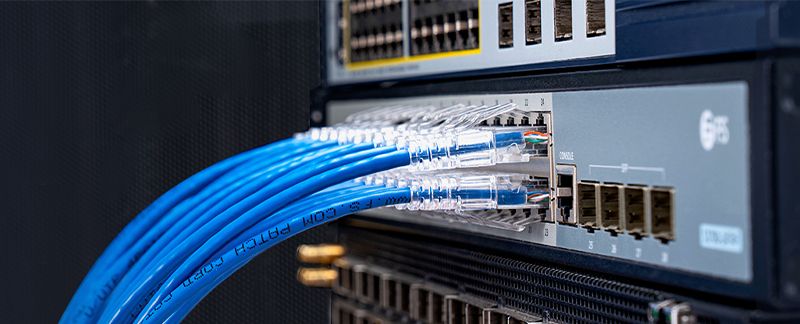Twisted pair copper cabling is the most ubiquitous for Ethernet network and telephone installations. But how much do you know about twisted pair cable? What makes it different from other cables, and how many types of twisted cables are there? Here in this article, you can find all the answers you are looking for. Please keep reading.
What is Twisted Pair Cable
A twisted pair cable is a type of cable made by putting two separate insulated wires together in a twisted pattern and running them parallel to each other to improve electromagnetic compatibility. By twisting the wires, some part of the noise signals goes in one direction (sending) while the other part goes in the opposite direction (receiving). This twisting helps dampen the magnetic effect on the wires, and the external waves cancel out due to the different twists. Compared to a single conductor or an untwisted balanced pair, a twisted pair reduces electromagnetic radiation from the pair and crosstalk between neighboring pairs and improves the rejection of external electromagnetic interference. According to EIA/TIA-568 standard, twisted pair cables are classified into categories such as Cat5e, Cat6, Cat7, and Cat8 cables based on their electrical characteristics.
Types of Twisted Pair Cables
For additional noise immunity, twisted pair cabling may be shielded. A cable with shielding is known as a shielded twisted pair (or STP cable) and without an unshielded twisted pair (or UTP cable). The below content explains their differences in detail.
Unshielded Twisted Pair Cable
UTP cable is a low-cost network cable built with a pair of insulated conductors twisted together and covered with a plastic jacket for protection. It has no foil wrap shielding or braided shielding screen, which makes the cable smaller in diameter. 24 AWG (short for American Wire Gauge) is the most commonly seen size of UTP cables. FS offers even thinner cables – Cat6 28AWG slim cables, which support 250MHz bandwidth and 1000-T Ethernet, allowing for more reliable data transmission. Thinner UTP cables are easy for routing through the tightest spaces and cable management panels, which further helps improve the airflow and reduce network downtime risk.

Except for its use in many Ethernet networks and telephone systems. UTP is also the most common cable used in computer networking. And as UTP cable bandwidth has improved to match the baseband of television signals, UTP is now used in some video applications as well, primarily in security cameras.
Benefits of UTP Cable
It is less expensive and less costly compared to other networking media types.
It is the most compatible cabling, can be used with most other major networking systems, and does not require grounding.
It is smaller in size; hence installation is easier as it does not fill up wiring ducts.
Shielded Twisted Pair Cable
Like UTP cable, STP cable contains an extra foil wrapping or copper braid jacket to help shield the cable signals from interference, thereby transporting data faster. STP cables attract interference to the shield and then run it off into a grounded cable. According to different shieldings, STP cables can be divided into several types:
- Foil Twisted Pair (FTP) – With FTP cables, each twisted pair of cables is wrapped in shielding of foil to protect the cable from EMI and crosstalk.
- Shielded/Foil Twisted Pair (SFTP) – A cable classified as shielded foil twisted pair (S/FTP) combines FTP and STP shielding. The wires inside the cable are twisted and then shielded with foil wrapping, then the 4-pair grouping of foiled wires are shielded by a wrapping of either foil or a flexible braided screening. This provides the highest level of protection against EMI and crosstalk.

STP cables are widely used in computer and telephone networking, including wiring Ethernet connections for computer networks and commercial and residential telephone connections. Since STP cables are durable and long-lasting, with their shielding characteristics, they can also be used in industrial settings with high amounts of electromagnetic interference, such as a factory with large electronic equipment, etc.
Benefits of STP Cable
Shielding reduces the chance of crosstalk and protects from interference.
It supports higher data signal transmission speed.
It provides more secure data transmission.
Conclusion:
A twisted pair cable is the simplest transmission medium. Its characteristic of being able to cancel out electromagnetic interference from external sources makes it differ from other types of cables. The above content explained its two different types – STP and UTP, as well as their various applications and benefits, hoping it can give you a more precise idea of twisted pair cable. If you are looking for high-performance twisted pair cables for your structured cabling, FS offers a wide range of unshielded and shielded cables with different categories (Cat5e/6/6a/7/8 patch cables) and sizes (24/26/28 AWG) that are designed to meet your needs.
